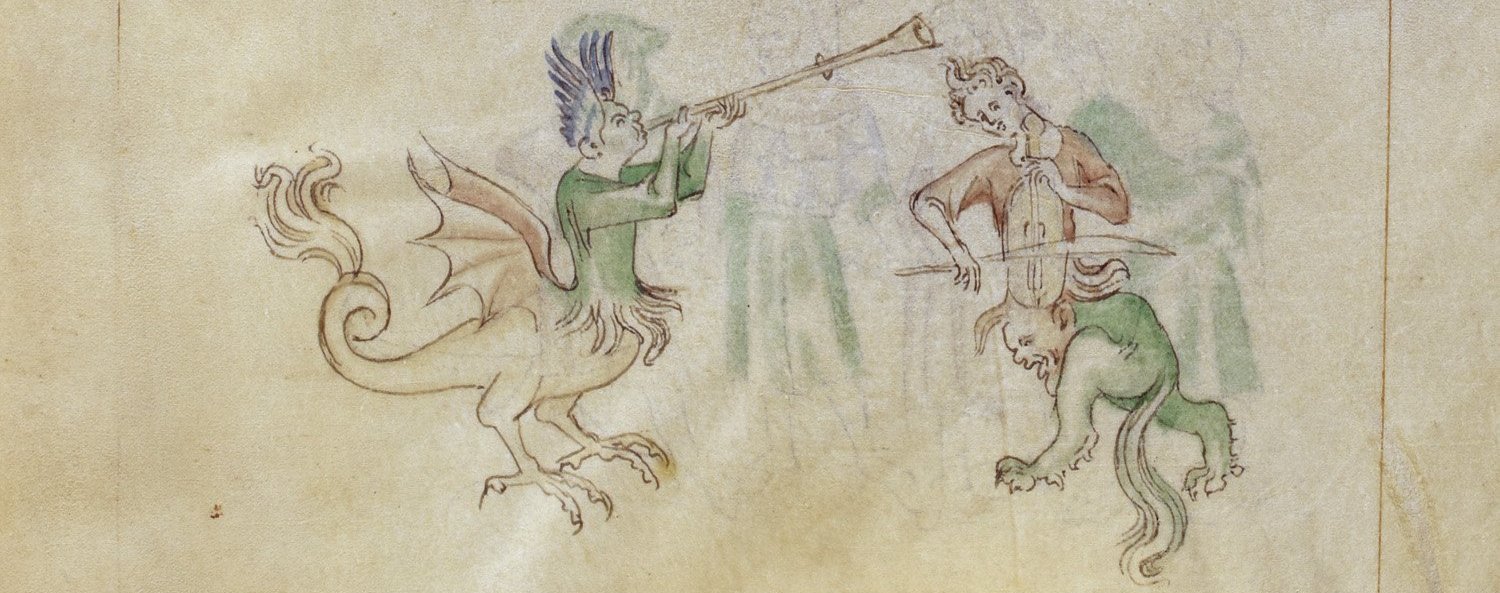 Cristina Alís Raurich is a historical musician and researcher who specialises in keyboards of the middle ages and early renaissance: portative organ, positive organ, clavicimbalum, and clavicytherium. Not only is Cristina a musician of consummate skill, her love for her instruments and specialism is obvious and infectious: rarely have I seen anyone play and talk about music with such transparent joy. This I discovered when we met at Bolton Castle, Wensleydale, England, in 2017, where she gave a presentation on the history of the portative organ; performed in the duo, Sonus Hyspaniae, on portative organ and percussion, with Raúl Lacilla on musa (medieval bagpipe) and frestel (medieval Pan pipe); and kindly agreed to the following interview for Early Music Muse.
Cristina Alís Raurich is a historical musician and researcher who specialises in keyboards of the middle ages and early renaissance: portative organ, positive organ, clavicimbalum, and clavicytherium. Not only is Cristina a musician of consummate skill, her love for her instruments and specialism is obvious and infectious: rarely have I seen anyone play and talk about music with such transparent joy. This I discovered when we met at Bolton Castle, Wensleydale, England, in 2017, where she gave a presentation on the history of the portative organ; performed in the duo, Sonus Hyspaniae, on portative organ and percussion, with Raúl Lacilla on musa (medieval bagpipe) and frestel (medieval Pan pipe); and kindly agreed to the following interview for Early Music Muse.
Cristina performs internationally solo and with medieval music groups Magister Petrus, La Douce Semblance, Le Souvenir, Carmina Harmonica, Sonus Hyspaniae and Hamelin Consort; and gives courses and master classes on medieval music and medieval keyboards around Europe. She is assistant director and faculty member of Medieval Music Besalú, the international course on medieval music performance in Besalú, Catalonia, a teacher at the Centre International de Musiques Médiévales de Montpellier, France, and currently a doctoral student at the University of Würzburg, Germany.
In this interview, Cristina discusses how she discovered medieval keyboards; her research into the portative organ and her commissioning of the only 13th century reconstruction; its playing techniques within the framework of medieval musical styles; its performance context in the middle ages; and performance presentation to a modern audience.
This article includes three videos of Cristina playing: table organ, clavicytherium, and portative organ.
Read more
 The origins of the guitar are much-discussed and much-disputed, and some pretty wild and unsubstantiated claims are made for its heritage, based on vaguely guitar-like instruments in medieval and even pre-medieval iconography, about which we often know little or nothing beyond an indistinguishable drawing, painting or carving; or based on instruments which have names that sound like ‘guitar’. This article is an attempt to slice through the fog with a brief history of the instrument, charting its development from the renaissance, through the baroque period to the modern day, based only on what can be claimed with evidence. The article is illustrated with pictures, videos and sound recordings, beginning with a short video of guitar history.
The origins of the guitar are much-discussed and much-disputed, and some pretty wild and unsubstantiated claims are made for its heritage, based on vaguely guitar-like instruments in medieval and even pre-medieval iconography, about which we often know little or nothing beyond an indistinguishable drawing, painting or carving; or based on instruments which have names that sound like ‘guitar’. This article is an attempt to slice through the fog with a brief history of the instrument, charting its development from the renaissance, through the baroque period to the modern day, based only on what can be claimed with evidence. The article is illustrated with pictures, videos and sound recordings, beginning with a short video of guitar history.
















